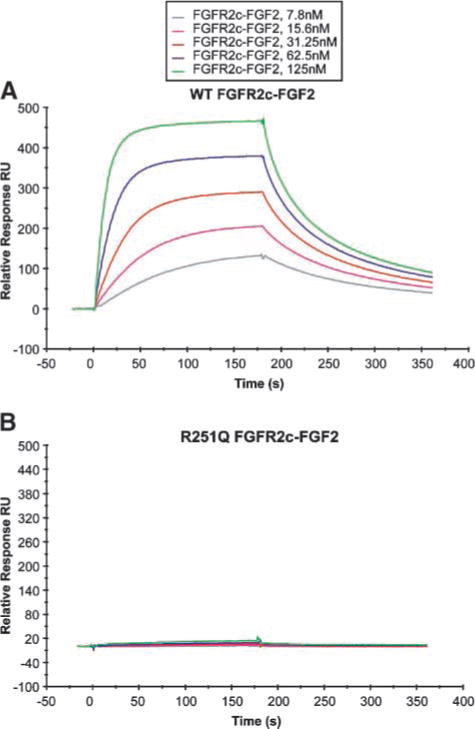FIGURE 3.

Surface plasmon resonance analysis shows that the R251Q mutation abrogates ligand binding. A and B. Increasing concentrations of wild-type (WT; A) or R251Q FGFR2c mutant ectodomain (B) were injected over a CM5 chip onto which full-length human FGF2 was immobilized. The biosensor chip response is plotted as a function of time. Surface plasmon resonance analysis was done as previously described (19).
